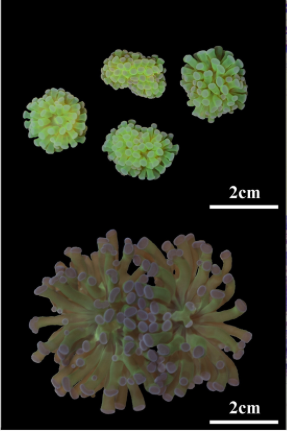
Article Link:
Phosphate deficiency promotes coral bleaching and is reflected by the ultrastructure of symbiotic dinoflagellates
Authors:
Rosset, S., et al.
Journal:
Marine Pollution Bulletin (2017), Volume 118, Issues 1–2, 15 May 2017, Pages 180-187
http://dx.doi.org/10.1016/j.marpolbul.2017.02.044
Open Access funded by European Research Council
Under a Creative Commons license
open access
No comments for this one. It’s open-access/creative commons, so I’ll quote liberally.
- Undersupply with dissolved inorganic phosphate causes coral bleaching.
- Ultrastructural biomarkers in algal symbionts identify nutrient stress in reef corals.
- Uric acid crystals in zooxanthellae identify high N:P ratios in the water column.
- Nitrate enrichment of the water causes phosphate deficiency in Symbiodinium.
- Coral symbionts tolerate nitrogen limitation better than phosphorus limitation.
We exposed corals to imbalanced N:P ratios in long-term experiments and found that the undersupply of phosphate severely disturbed the symbiosis, indicated by the loss of coral biomass, malfunctioning of algal photosynthesis and bleaching of the corals. In contrast, the corals tolerated an undersupply with nitrogen at high phosphate concentrations without negative effects on symbiont photosynthesis,
The ratio of dissolved inorganic nitrogen to phosphorus in the marine environment can be interpreted as an indicator of whether photosynthetic primary production is limited by the availability of nitrogen or phosphorus. In coral reef waters, N:P ratios were found in an approximate range from 4.3:1 to 7.2:1 (Smith et al., 1981, Crossland et al., 1984, Furnas et al., 1995) which is lower than the canonical Redfield ratio of 16:1, considered optimal to sustain phytoplankton growth (Redfield, 1958). Consequently, many processes in coral reefs tend to be nitrogen limited (Furnas et al., 2005).
Fig. 1. Effect of dissolved inorganic nutrient availability on polyp size, and on zooxanthellae density and ultrastructure. Panels on the left hand side show representative photographs of Euphyllia paradivisa polyps from each experimental treatment. Panels in the central column show light microscope images of tentacle endoderm cross sections (× 40 magnification). Panels on the right hand side show micrographs of individual zooxanthellae which represent a mean ultrastructure (n = 100) resulting from the respective treatments (× 6000 magnification). HN/HP = high nitrogen/high phosphorus, LN/LP = low nitrogen/low phosphorus, HN/LP = high nitrogen/low phosphorus, LN/HP = low nitrogen/high phosphorus. AB = accumulation body, ch = chloroplast, LB = lipid body, N = nucleus with condensed chromosomes, P = pyrenoid, S = starch granule, U = uric acid crystals.

